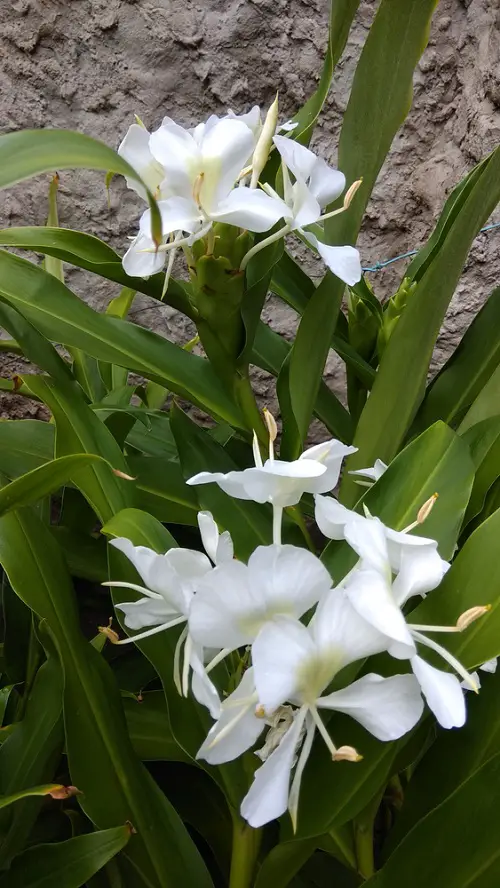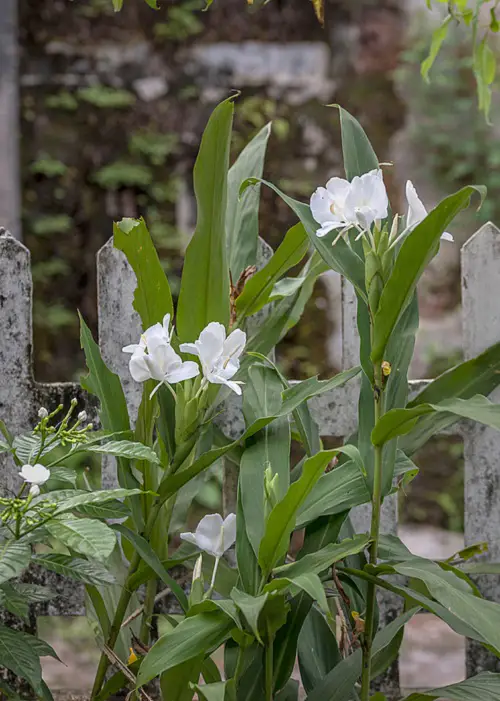Wondering what Cuba National Flower is? Discover all the details and information of the plant along with some cool growing tips!
Unveil the mystery behind Cuba National Flower — a captivating bloom imbued with historical significance, cultural heritage, and stunning beauty. Beyond its elegant white petals lies a tale intertwined with revolution, folklore, and Cuban identity, this isn’t just a flower; it’s a symbol of resilience and national pride. Ready to dive into the intriguing journey of the Mariposa and explore how it became a living emblem of Cuba’s spirit!
Cuba National Flower
Cuba’s national flower is the Hedychium coronarium, commonly popular as the White Ginger Lily or “Mariposa” in Spanish. This aromatic, perennial plant was declared the national flower of Cuba in 1936. It holds significant cultural, historical, and symbolic weight for the country, but its roots trace back to Asia.
Physical Characteristics
- Flowers: The plant produces aromatic, white flowers that are tubular in shape.
- Leaves: Long, green leaves accompany the stunning blooms.
- Height: It can grow up to 6-8 feet in height under optimal conditions.
Growth Habits
- Blooming Season: Late summer to early autumn.
- Climate Tolerance: It grows quite well in tropical and subtropical climates.
Fragrance
- Aromatic: The flowers emit a pleasant, jasmine-like fragrance.
Most Beautiful White Fragrant Flowers
Medicinal Uses
- Traditional Medicine: Used in traditional medicine for various ailments, although scientific support is limited.
Ornamental Uses
- Gardening: It is quite famous as an ornamental plant due to its stunning appearance and pleasant aroma.
Commissioning as National Flower
- Year: The White Ginger Lily was designated as Cuba’s national flower in 1936.
- Symbolism: It was chosen for its symbolic representation of purity and rebellion. During the wars for independence from Spain, Cuban women who were involved in revolutionary activities used to pass on messages hidden in these flowers.
Check Out How to Grow Arizona State Flower Here
Native Habitat and Roots in Cuba
Native to Asia
- Origins: The White Ginger Lily is native to the eastern Himalayas, specifically regions of Nepal and Bhutan.
Adaptation in Cuba
- Acclimatization: The plant grows successfully in Cuba’s tropical climate and is now a common sight throughout the island.
Contribution to Cuban Society
Cultural Impact
- Tradition and Rituals: The flower is popular in traditional Cuban ceremonies and is a common offering in religious rituals.
Economic Impact
- Commercial Use: While it is not a major commercial crop, the flower does contribute to local markets and has some medicinal uses.
Environmental Impact
- Ecosystem: It adds aesthetic and ecological value to Cuba’s landscapes but is not a key player in the island’s biodiversity.
Cuba National Flower – Quick Growing Tips
Cultivating the White Ginger Lily (Hedychium coronarium) can add a tropical flair to your garden, along with the pleasant fragrance these flowers offer. Below are some quick and effective growing tips to ensure a thriving plant.
- Partial Shade to Full Sun: Around 4-6 hours of sunlight is ideal for the White Ginger Lily.
- Well-Drained Soil: Choose a well-drained, loamy soil. Aim for a slightly acidic to neutral pH range of 6.0 to 7.0.
- Consistent Moisture: Keep the soil consistently moist, especially during the growing season. Make sure not to waterlog the soil.
- Balanced Fertilizer: Use a balanced fertilizer (e.g., 14-14-14) once a month during the growing season.
- Warm Conditions: Prefers temperatures between 65-75°F but can tolerate up to 90°F.
- Organic Mulch: Use organic mulch to maintain soil moisture and temperature.
- Watch Out for Aphids and spider mites are common pests; neem oil can be an effective treatment.
- Regular Trimming: Trim dead or yellow leaves and spent blooms to encourage new growth.





